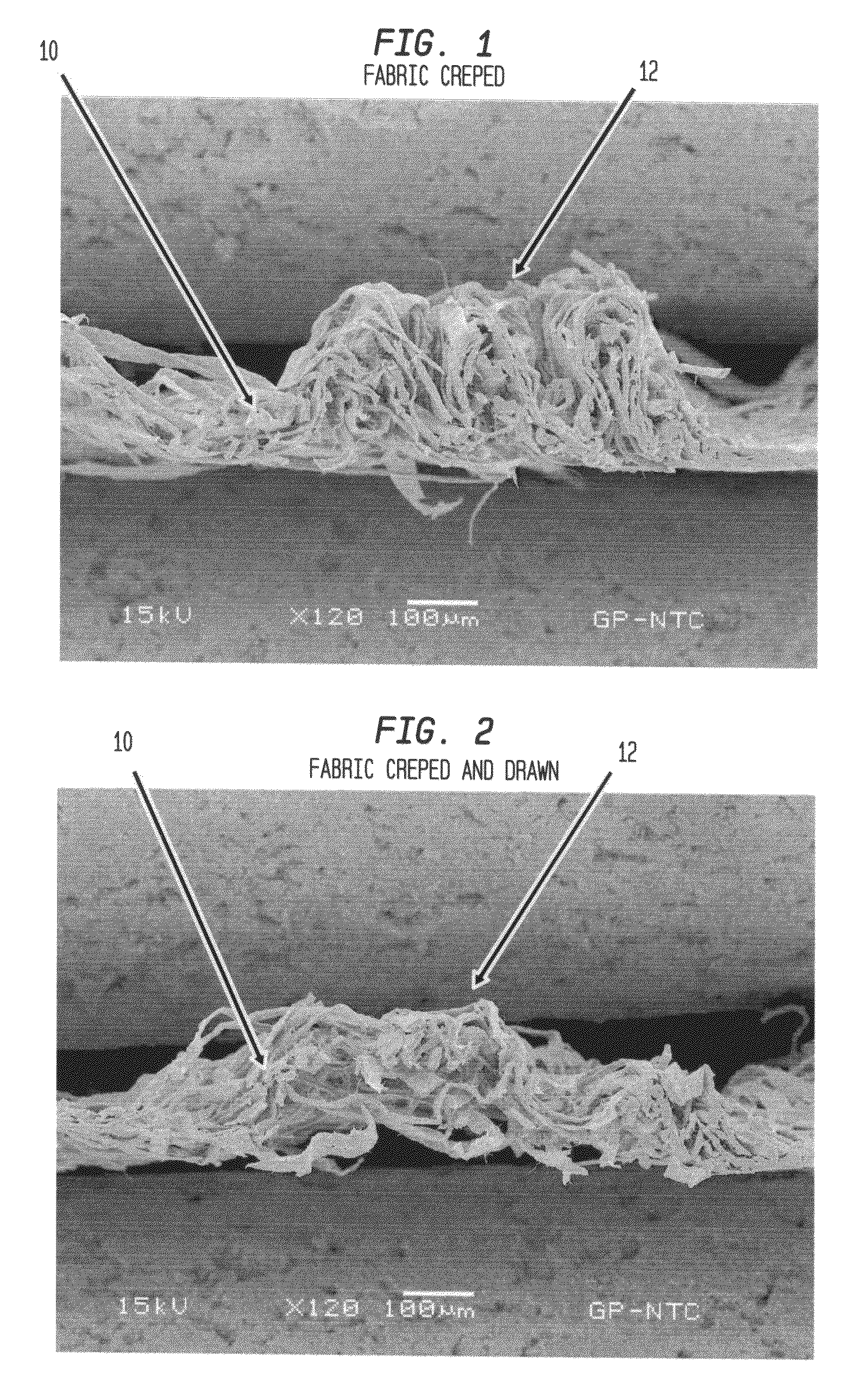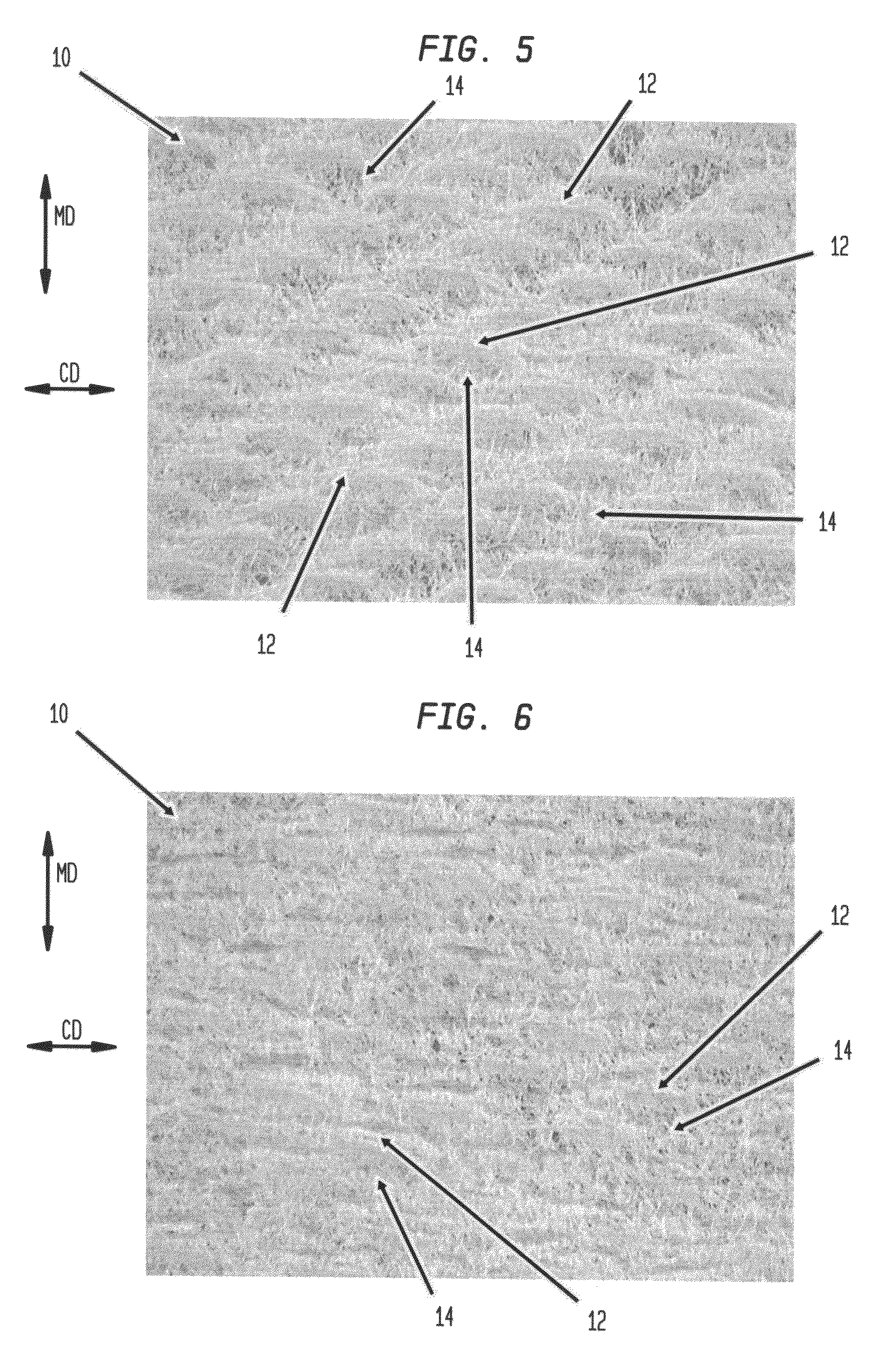Fabric crepe/draw process for producing absorbent sheet
a fabric crepe and absorbent sheet technology, applied in the direction of press section, non-fibrous pulp addition, patterned paper, etc., can solve the problems of reducing the dimensionality of the web, affecting the effect of dimensionality, and affecting the quality of the web, so as to reduce the sidedness of the web and increase the bulk of the web
- Summary
- Abstract
- Description
- Claims
- Application Information
AI Technical Summary
Benefits of technology
Problems solved by technology
Method used
Image
Examples
examples 1-8 and examples a-f
[0209]A series of absorbent sheets were prepared with different amounts of fabric crepe and overall crepe. In general, a 50 / 50 southern softwood kraft / southern hardwood kraft furnish was used with a 36 m (M weave with the CD knuckles to the sheet). Chemicals such as debonders and strength resins were not used. The fabric crepe ratio was about 1.6. The sheet was fabric creped at about 50% consistency using a line force of about 25 pli against the backing roll; thereafter the sheet was dried in the fabric by bringing it into contact with heated dryer cans, removed from the fabric and wound onto the reel of the papermachine. Data from these trials are designated as Examples 1-8 in Table 3 where post-fabric creping draw is also specified.
[0210]Further trials were made with an apparatus using compactive dewatering, fabric creping and Yankee drying (instead of can drying) using an apparatus of the class shown in FIGS. 25 and 26 wherein the web was adhered to the Yankee cylinder with a pol...
PUM
| Property | Measurement | Unit |
|---|---|---|
| angle | aaaaa | aaaaa |
| velocity delta | aaaaa | aaaaa |
| velocity delta | aaaaa | aaaaa |
Abstract
Description
Claims
Application Information
 Login to View More
Login to View More - R&D
- Intellectual Property
- Life Sciences
- Materials
- Tech Scout
- Unparalleled Data Quality
- Higher Quality Content
- 60% Fewer Hallucinations
Browse by: Latest US Patents, China's latest patents, Technical Efficacy Thesaurus, Application Domain, Technology Topic, Popular Technical Reports.
© 2025 PatSnap. All rights reserved.Legal|Privacy policy|Modern Slavery Act Transparency Statement|Sitemap|About US| Contact US: help@patsnap.com



